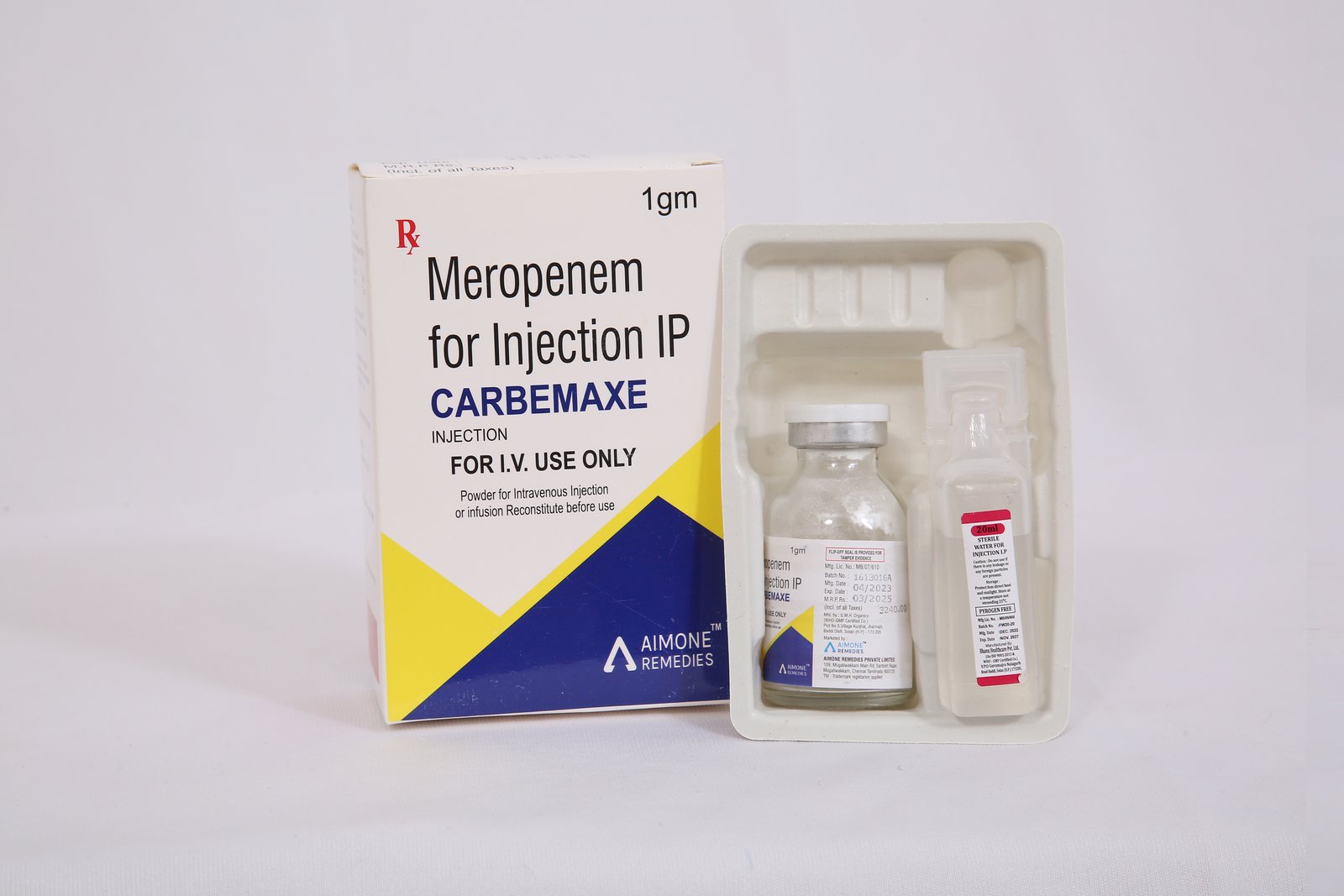
CARBEMAX
Meropenem Injection
Meropenem Injection is a broad-spectrum carbapenem antibiotic used to treat serious bacterial infections. It is highly effective against a wide variety of bacteria, including both gram-positive and gram-negative organisms, as well as some anaerobes. Meropenem works by inhibiting bacterial cell wall synthesis, ultimately causing bacterial cell death.

Mechanism of Action
Meropenem works by binding to and inhibiting the activity of bacterial penicillin-binding proteins (PBPs). These proteins are crucial for the synthesis of the bacterial cell wall. Without a functional cell wall, the bacteria cannot maintain their structural integrity, leading to cell lysis (death).

Indications
Meropenem Injection is typically used to treat severe infections caused by susceptible bacteria. It is often reserved for cases where other antibiotics are ineffective or when broad-spectrum coverage is needed. Some of the conditions treated with Meropenem include:
- Complicated intra-abdominal infections (e.g., peritonitis, abscesses)
- Complicated urinary tract infections (including pyelonephritis)
- Severe pneumonia (including hospital-acquired and ventilator-associated pneumonia)
- Bacterial meningitis (infection of the membranes around the brain and spinal cord)
- Sepsis (bloodstream infections)
- Skin and soft tissue infections (e.g., infected ulcers or surgical wounds)
- Bone and joint infections (e.g., osteomyelitis)
- Complicated infections in neutropenic patients (patients with weakened immune systems)
Dosage and Administration
Adults:
The typical dose of Meropenem for adults is 500 mg to 1 g every 8 hours for most infections. In severe cases, higher doses (e.g., 1-2 grams every 8 hours) may be required.Children:
For pediatric patients, the dosage is generally based on weight and the severity of the infection.Administration:
: Meropenem is administered intravenously (IV) or intramuscularly (IM) by a healthcare provider.Duration:
The duration of treatment typically ranges from 5 to 14 days, depending on the type and severity of the infection. It should be used for the shortest duration necessary to minimize the risk of resistance.- Severe allergic reactions (e.g., anaphylaxis, hives, difficulty breathing)
- Severe diarrhea due to Clostridium difficile infection (C. difficile colitis), which may occur with broad-spectrum antibiotics.
- Seizures: Meropenem can lower the seizure threshold, particularly in patients with renal impairment or a history of seizures.
- Kidney problems: Elevated levels of creatinine or urea in the blood may indicate kidney issues.
- Hematologic issues: Changes in blood counts (e.g., low white blood cell count, low platelets).
- Allergic Reactions: Patients with a history of hypersensitivity to carbapenems, penicillins, or other beta-lactam antibiotics should not receive Meropenem.
- Renal Function: Dose adjustments may be necessary in patients with renal impairment, as the drug is primarily eliminated by the kidneys.
- Seizure Risk: Meropenem may increase the risk of seizures, especially in patients with existing neurological conditions or kidney problems.
- Pregnancy and Breastfeeding: Meropenem is classified as a Pregnancy Category B drug, meaning it is generally considered safe, but should only be used during pregnancy if clearly needed. It is excreted in breast milk in small amounts, so breastfeeding while on Meropenem should be done with caution.
- Drug Interactions: Meropenem may interact with other medications, such as valproic acid (an anticonvulsant), which can lower the blood levels of valproic acid, potentially leading to seizures.
Side Effects
Common side effects include:
